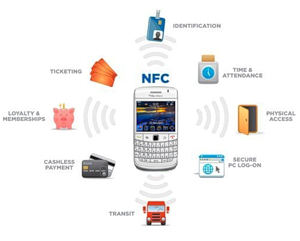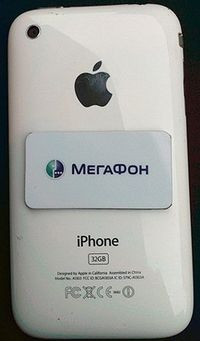Google will launch NFC-based mobile payments
 Google is preparing to submit a contactless payment system for smartphones based on Android OS. Google chose Sprint Nextel as its first partner. Innovation will allow to make purchases without money or a bank card.
Google is preparing to submit a contactless payment system for smartphones based on Android OS. Google chose Sprint Nextel as its first partner. Innovation will allow to make purchases without money or a bank card.The Google service is based on Near Field Communication (NFC) technology, which allows you to organize data transfer between devices at short distances (several centimeters). In order to pay for the purchase, you need to bring the smartphone to a special module located at the point of sale, which "considers" the information. This scheme does not involve the participation of the cashier, which can significantly speed up the shopping process.
Smartphones equipped with
It is assumed that Google will not charge a transaction fee, but will provide retailers with more data on the consumer habits of their customers. This service can be used by sellers to improve the quality of targeted advertising, and buyers with Android phones will receive a discount.
For Google, launching a payment system is also a way to expand the possibilities of mobile targeted advertising, which is increasingly being talked about lately.
')
NFC in Russia
 Many companies (almost all major cellular operators), including Russian, have expressed their interest in contactless payments. In November last year, Megafon tested the payment service for a trip to the subway in
Many companies (almost all major cellular operators), including Russian, have expressed their interest in contactless payments. In November last year, Megafon tested the payment service for a trip to the subway in Security
The radio frequency RF signal can be intercepted by antennas. The distance from which an attacker is able to eavesdrop on a radio frequency signal depends on numerous parameters. A passive device that does not produce its own radio frequency field is much harder to eavesdrop on than an active device.
The NFC standard alone does not offer protection against eavesdropping. In theory, the protocol stack should use cryptoalgorithms over NFC to protect data.
Data destruction is relatively easy to accomplish with RFID jammers. There is no way to prevent such an attack, but the only result will be problems in establishing communication with the receiver, the chip itself will remain intact.
Unauthorized modification of the data inside the message by an attacking device is impossible in practice due to the inability to predict the amplitude and phase shift of the induced signal at the receiving device.
Source: https://habr.com/ru/post/120057/
All Articles